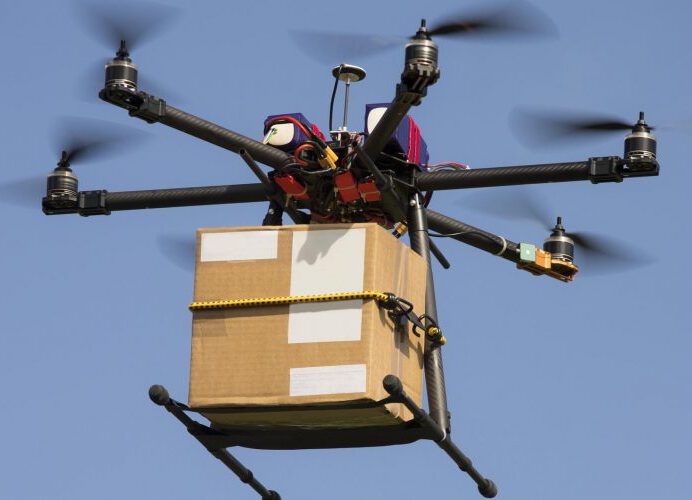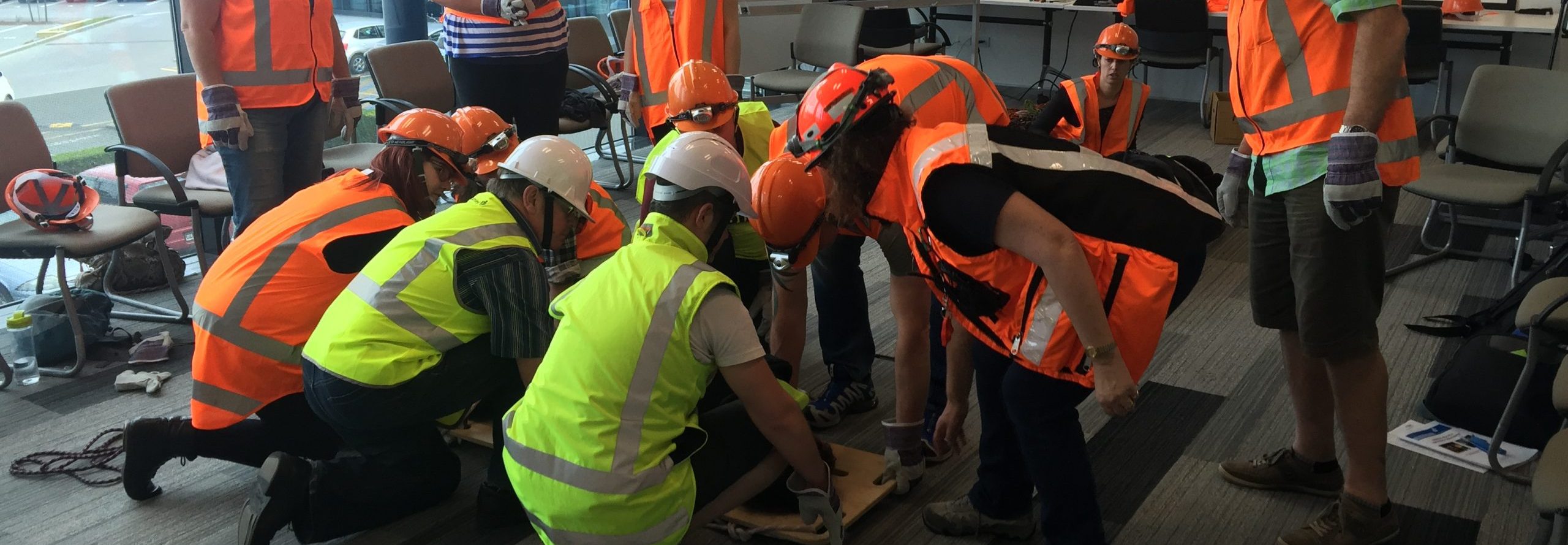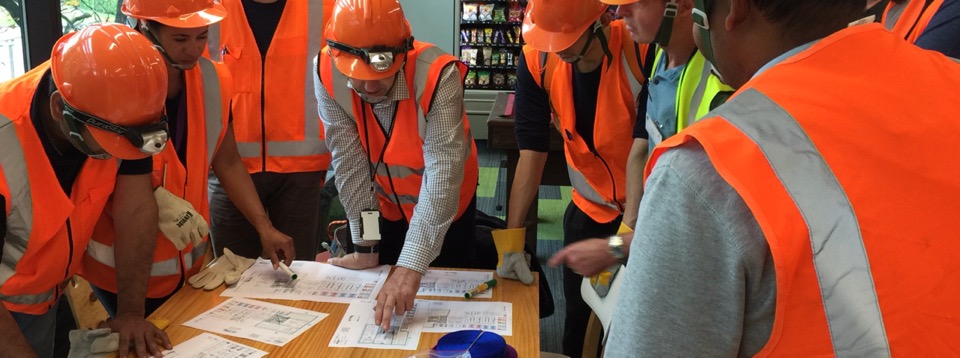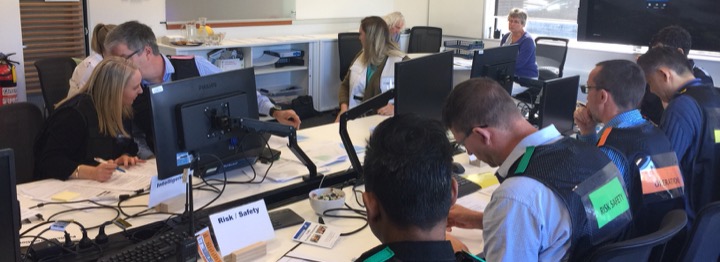Following the Government inquiry into the Response to the severe weather events that hit the North Island in 2023, a new Emergency Management Bill in being introduced in Parliament. The Bill will replace the Civil Defence Emergency Management Act ...
Tsunami warnings
Wellington Regional Emergency Management Office has advised the following re why it can take some time for Tsunami warnings to be issued. :
https://www.facebook.com/share/p/RoV1TNaf3hJ3DEJ8/?mibextid=WC7FNe
After an earthquake, GNS ...
Cyclone Gabrielle Review
Following the events of Cyclone Gabrielle many organisations undertook reviews of how they responded to this event. This included the Government ...
Weather on your Mobile
MetService App This app allows you to stay up to date, no matter where you are. This includes notifications for Red Severe Weather, Warnings and Extreme Fire Danger. This App provides Forecasts for over 3000 locations. Read more
CIMS 3rd Edition
As an NZQA Category 1 Training Provider, we deliver tailored training which can include assessment for NZQA Unit Standards – CIMS Levels 3, 4, 5 & 6. The CIMS 3rd edition is an updated resource used with all our CIMS training and exercises ...
WREMO – Earthquake Planning Guide
National Disaster Resilience Strategy
The strategy can be downloaded from the MCDEM Website.
Deaf Communities – Emergency Information
Up until now majority of the information shared about emergencies is done in media interviews, on TV and at Public Meetings. In the event of a major emergency it is important that everyone be ready and able to follow any advise given. Civil Defence and Deaf Aotearoa will work together to get New Zealand Sign Language interpreting used in emergencies where practicable – and to jointly create emergency preparedness resources.
Click here to read full article from Hon Kris Faafoi
Click here to go to Deaf Aotearoa website
McDEM – Emergency Mobile Alert
Emergency Mobile Alert messages can only be sent by the Ministry of Civil Defence & Emergency Management, Civil Defence Emergency Management Groups, NZ Police, Fire and Emergency New Zealand, the Ministry of Health and the Ministry for Primary Industries.
If your phone is on, capable of receiving them and inside the targeted area, you should get the alerts. You can find out whether your phone can receive the alerts at civildefence.govt.nz.
Emergency Mobile Alert messages do not replace other emergency alerts. They are an additional way of warning you, along with other channels. Take immediate action. Not all phones are capable of receiving the alerts, so if you receive an alert, let others know. If you feel your life is in danger, don’t wait for an official warning. Read more …..
Drones in disaster zones could prove a lifesaver

Under a collaborative agreement with the Defence Science and Technology (DST) Group, UniSA researchers have successfully trialled unmanned aerial vehicles to measure heart and respiratory rates using remote-sensing imaging systems, while hovering three metres from humans.
Video footage from the drones can detect changes in human skin tone and minute head movements to read vital signs, providing a low cost, accurate and convenient way to monitor heart rates without physical restrictions, researchers say.
The breakthrough could have many applications, including triaging disaster victims in earthquakes, detecting security and terrorism threats at airports, and remotely monitoring heart rates of premature babies in incubators.
Under the supervision of Professor Javaan Chahl, UniSA PhD students Ali Al-Naji and Asanka Perera carried out a number of experiments with 15 healthy individuals, ranging in age from 2-40 years, in both indoor and outdoor settings, and within close range of the drones.
The results were as accurate as traditional contact methods – ECGs, pulse oximeters and respiratory belts – that are currently used to monitor vital signs.
“This is the first time that video from a hovering UAV has been used to measure cardiorespiratory signals,” Chahl says.
The experiments were performed within three metres of humans but researchers expect the drones to capture information at much greater distances once the technology is further developed.
Heart monitors
The drones could help detect potential terrorists in public spaces, merely by measuring anomalies in their heart rates, according to Chahl, a Professor of Sensor Systems in UniSA’s School of Engineering.
“A person who is about to engage in violence will probably have anomalous behaviour and physiological signs.
“They might be highly agitated or unnaturally calm and in many cases they might be under the influence of drugs.
“There is a good chance that our system can detect these anomalies.”
In the developing world, expensive disposable electrodes could also be replaced with this technology to monitor vital signs remotely and eliminate the temptation to reuse the electrodes which can spread horrific skin infections between neonatal infants.
Aged care facilities may also benefit from the imaging systems which could be placed in strategic locations to monitor older people’s heart and breathing rates, Chahl adds.
“Obviously there are privacy and ethical issues around this technology that need to be resolved before it becomes common practice, but there is enormous potential to use machine vision systems to benefit society, particularly in the biomedical sphere.
“I expect we will be using this software in everyday life in the next decade.”
Source: Asia Pacific Infrastructure
Commercial building owners & earthquake-prone buildings (EPBs)
The new national framework for managing earthquake-prone buildings (EPBs) that became effective on 1 July 2017 has brought several changes.
These include a national register, new forms of EPB notice that must be displayed prominently on all EBPs and set time frames for assessment and strengthening.
Councils, engineers and commercial building owners are each assigned key responsibilities in connection with the implementation of the new system. These can be summarised as follows:
- The initial identification of EPBs by councils do not involve a detailed engineering assessment of the buildings.
- Councils are required to look at building features at a high level in making their initial
...
Reserve Bank sets out its stance on cyber security

Firms in the finance sector, regulators, and other authorities all have a part to play in managing cyber security risks, a Reserve Bank executive said.
They can take on this challenge while still benefiting from the opportunities of new financial technology, said Reserve Bank Head of Prudential Supervision, Toby Fiennes, in a speech delivered to the Future of Financial Services conference, in Auckland.
“The dynamic cyber environment means organisations have to be nimble in their approach to cyber security – focused on outcomes, rather than prescriptive compliance exercises,” said Fiennes.
He said that cyber-attack poses a significant threat to the global financial system, as shown by the ‘WannaCry’ ransom-ware attack that affected more than 200,000 systems around the world and the more recent ‘Notpetya’ attack.
“The nature and incidence of cyber risk is unique, meaning that typical approaches to risk management and disaster recovery planning may not be appropriate. While cyber vulnerabilities can be mitigated, the potential sources of cyber threats and the attack footprint are just too broad, so they can never be eliminated,” Fiennes said.
The Reserve Bank had thought about whether to introduce more prescriptive requirements but decided not to at this stage.
“We doubt that prescriptive regulations would appreciably improve the outcome, when the technology and threat landscape are both changing so rapidly. We will, however, review this policy stance from time-to-time to ensure that it remains appropriate,” Fiennes said.
“The Reserve Bank is closely watching the emerging wave of ‘digital disruption’ affecting the financial sector as firms react to customer demand for a more online experience. In the short term, digital disruption may result in new risks and increased instability in the financial system but in the long term, digital disruption of the banking sector may improve the efficiency of the financial system. The long-term impact on financial system soundness is less clear. Read more.
National code for quake-prone buildings leaves owners with less time, tighter rules
Owners could be left with less time and tighter rules in bringing quake-prone buildings up to code as national regulations are overhauled.
The changes, which begin on Saturday, will take decision-making away from territorial authorities with their own guidelines and create a single, national policy.
The Building Amendment Act 2016 sets a standardised time limit for the strengthening or demolition of quake-prone buildings to take place.
Regions will be divided into areas of low, medium and high seismic risk and deadlines will differ accordingly.
In Marlborough, a region deemed high risk, some building owners could be given two-and-a-half years less than under council rules to complete obligatory upgrades. Read more here.
Fire and Emergency New Zealand (FENZ)

Fire and Emergency New Zealand (FENZ) was established on 1 July 2017. It is the amalgamation of the New Zealand Fire Service, the National Rural Fire Authority, 12 enlarged rural fire districts and 26 territorial authority rural fire authorities. FENZ ...
How to protect your computer from Petya and other ransonware
The latest computer virus that is similar to Wannacry has spread very quickly across Europe overnight and could arrive in New Zealand at any time. It is a type of virus known as ransomware. It encrypts all files on ...
Canterbury earthquake memorial
Prime Minister Bill English addressed the thousands of people gathered on Wednesday afternoon at the unveiling of Oi Manawa, the memorial to the 185 people who died in the magnitude-6.3 earthquake on February 22, 2011. Christchurch’s earthquake memorial is “a place to grieve, but also a place to hope”, says English.
Members of the public crammed into the area around the Montreal St bridge, flanking the official guests and dignitaries on the banks of the Avon River. Onlookers found vantage points in offices and apartments overlooking the scene, affording a view of the memorial.
STACY SQUIRES/FAIRFAX NZ A cyclist takes a moment to take in the memorial wall.
Oi Manawa, the earthquake memorial dedicated to the 185 victims of the magnitude-6.3 earthquake that struck Christchurch on February 22, 2011, has opened to the public on the sixth anniversary of the tragedy.
“We feel their absence keenly.”
He addressed the victims’ families directly: “We cannot know what fear or courage or hope filled the past moments of your loved ones. Today we stand with you and those who watched them go. Families, friends, workmates and complete strangers who reached for them and tried their utmost to protect them and comfort them.
“For years to come people will come to this place to remember and honour your loss as we hope today that this memorial of hopes will stitch up the ragged edges of broken hearts. You can know that the memories of your loved ones are at the foundations of this renewed city. May the living live with hope and those who have died rest in peace.”
Oi Manawa, meaning “tremor of the heart”, was designed by Slovenian architect Grega Vezjak. It is a 112.5-metre-long wall made of concrete and clad in Italian marble. It features the names of all 185 victims and sits on the banks of the Avon River near the intersection of Montreal St and Oxford Tce.
The crowd includes victims’ family and friends, some of whom have travelled from abroad and members of the public. It also features musical items from Marlon Williams, Timua Brennan and the New Zealand Army Band.
All but one of Christchurch’s so called anchor projects will be under construction this year as the rebuild finally begins to hit its straps.
‘I MISS YOU SO MUCH’
Strung around a tree nearby the memorial, notes to those who died dangle like petals, heartfelt words scrawled in many languages.
“Dear mum, I miss you so much, think about you every day,” writes Marie.
STACY SQUIRES/FAIRFAX NZ
Notes written to earthquake victim by their loved ones strung around a tree by the memorial.
“Your two granddaughters miss you as well.”
On Wednesday morning, commuters on their way to work paused on the Montreal St bridge, looking out over the water to Oi Manawa.
IAIN McGREGOR/FAIRFAX NZ
A note for Matty Beaumont, who died in the CTV building, above his name on the memorial. It reads: “We think of you every day and miss you”.
Ceremony crowd member, city resident Jocelyn Smith, said: “It’s an extreme honour to the city and the people – to those who lost their lives or loved ones, and also to those who have served in the response and rebuild.”
Megan Reilly, also of Christchurch, said she really liked the fact the families were consulted about the memorial.
“It seems nice as a place of reflection,” she said.
IAIN McGREGOR/FAIRFAX NZ Bouquets left at the memorial, which is 112.5 metres long and made of concrete, clad in Italian marble.
The wall was revealed to families and friends of victims at a private ceremony on Tuesday.
Montreal St will be closed from Oxford Tce between 10am and 2.30pm, Cambridge Tce is closed until 6pm and Oxford Tce is closed until 2.30pm.
STACY SQUIRES/FAIRFAX NZ Early-morning sun at the CTV site on Wednesday.
– Stuff
Sourced from Stuff.co.nz. Link is here. MICHAEL WRIGHT, JACK FLETCHER AND SHAR DAVIS
Wellington region updates tsunami warning maps after recent earthquake
WREMO/SUPPLIED
An updated collection of tsunami warning maps for the Wellington region have been published on the Civil Defence website, after previous versions left some residents confused and frustrated.
Wellington Region Emergency Management Office (Wremo) updated the maps to better reflect the areas most at risk of tsunami damage after a large earthquake.
It has also boosted the online accessibility of the maps, making them available in .jpg and printable .pdf formats.
Click here for an interactive map.
Map showing central Wellington’s tsunami zones.
The newly available maps now cover the entire coastline, rather than just central areas. They also build on newly acquired scientific knowledge uncovered since the maps were last created, “some years ago”.
READ MORE:
* PDF tsunami maps inadequate during time of crisis
* What went wrong after the quake and how to fix it
* Better safe than dead or maimed
Updates to the tsunami warning maps were based on “better understanding of wave dynamics within a harbour”, Wremo community resilience adviser Jason Paul said.
“Because of the large populace in the Wellington Harbour area, we’ve redone the remodelling … now we have more precise maps.”
Paul said the zones had generally been relaxed.
Coordinated Incident Management System – CIMS Planning Function
The unit standard for this function has been reviewed and updated and split into two unit standards:
Unit Standard 32159 ‘Demonstrate knowledge of the Planning function within the Coordinated Incident Management System and:
Unit Standard 32160 ‘ Apply knowledge of the Planning function within the Coordinated Incident Management System.
CIMS Function Manager Roles Levels 4 & 5
NZQA Unit Standards
| Unit Standard | Title | Level | Credits |
| Demonstrate knowledge of the Planning function within the Coordinated Incident Management System |
4 |
2 |
|
| Apply knowledge of the of the Planning process to a Coordinated Incident Management System response4 |
5 |
6 |
|
| Demonstrate knowledge of the Intelligence function within the Coordinated Incident Management System4 |
4 |
2 |
|
| Demonstrate and apply knowledge of the Intelligence function to a Coordinated Incident Management System response5 |
5 |
5 |
|
| Demonstrate knowledge of the Operations function within the Coordinated Incident Management System |
4 |
2 |
|
| Apply knowledge of the Operations function to contribute to a Coordinated Incident Management System response |
5 |
5 |
|
| Demonstrate knowledge of the Logistics within a Coordinated Incident Management System |
4 |
2 |
|
|
32166 |
Apply knowledge of the Logistics to contribute to a Coordinated Incident Management System response |
5 |
5 |
Devereux-Blum Training & Development Limited has consent to assess from the New Zealand Qualifications Authority under Section 252 of the Education Act 1989 for unit standards 32158-.32166
‘Triangle of Life’ advice resurfaces (again)
This advice has been widely discredited by leading emergency management agencies throughout the world, including New Zealand and we recommend people choose well developed, researched and official advice over unsolicited information from a self-professed expert.
- ‘Drop, cover and hold’ is the official advice of the New Zealand Government developed collaboratively with expert agencies such as GNS Science, EQC and the Society of Earthquake Engineers.
- Earthquakes don’t
...
NZQA External Evaluation & Review
Our 2022 NZQA External Evaluation and Review report is now available (see link above). As a Category 1 Training Provider, we are very proud of the review. The evaluation was very thorough in all areas of Educational Performance and Self-assessment. We appreciate all the support and feedback we receive from you, our clients. The evaluation was very thorough.
The purpose of this external evaluation and report is to provide a public statement about the Tertiary Education Organisation’s (TEO) educational performance and capability in self-assessment. It forms part of the accountability process required by Government to inform investors, the public, students, prospective students, communities, employers, and other interested parties. It is also intended to be used by the TEO itself for quality improvement purposes.
NZQA is Highly Confident in the educational performance and is Highly Confident in the capability in self-assessment of Devereux-Blum Training & Development. There are no recommendations.
Ratings against the Key Evaluation Questions used during this review:
How well
...
Training WCC Civil Defence Centre Volunteers
The centres collect information about the impact of an emergency and inform the Wellington Regional Emergency Management Office. There is very little equipment at Civil Defence Centres, so residents should plan to be self-sufficient.
In an emergency listen to your local radio station to hear which Civil Defence Centres are working. It’s a good idea to keep a note of your nearest Civil Defence Centre location in your home survival kit.
Volunteers
Volunteers play an important role in our efforts and in the community’s welfare – before, during and after an emergency. Volunteers with enthusiasm and commitment and a little bit of time to undertake training are needed. Volunteers work from their local emergency centre.
Volunteers are trained to perform a range of functions in the emergency centres including:
- radio communications
- operations
- welfare
- light search and rescue
If your are interested in helping as a centre volunteer contact the Wellington Emergency Management Office of your local council. The Wellington Regional Emergency Management Office can be contacted on ph 04 830 4279 or through their website.










